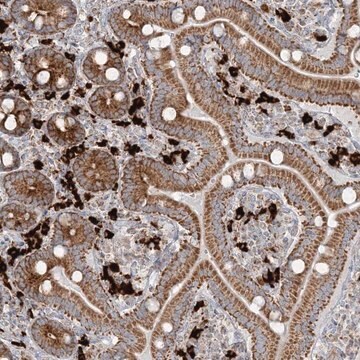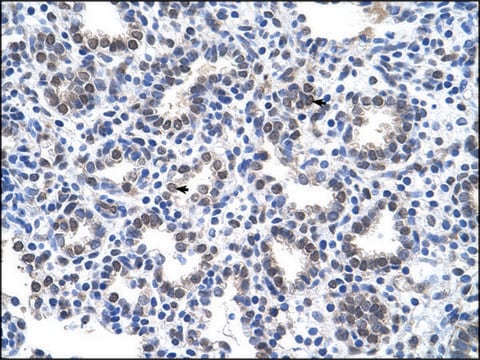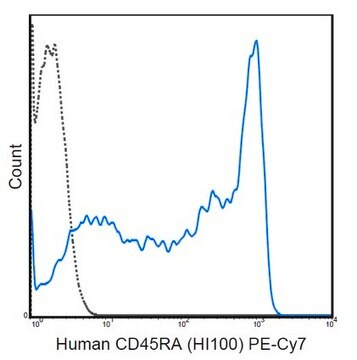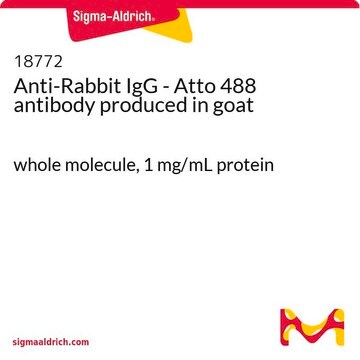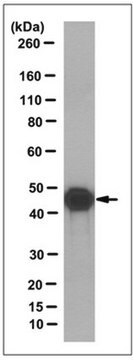MABN738
Anti-OCT6 Antibody, clone KT110
clone KT110, from mouse
Sinônimo(s):
POU domain, class 3, transcription factor 1, Octamer-binding protein 6, Oct-6, Octamer-binding transcription factor 6, OTF-6, POU domain transcription factor SCIP
About This Item
Produtos recomendados
fonte biológica
mouse
Nível de qualidade
forma do anticorpo
purified immunoglobulin
tipo de produto de anticorpo
primary antibodies
clone
KT110, monoclonal
reatividade de espécies
mouse, human
técnica(s)
electrophoretic mobility shift assay: suitable
immunohistochemistry: suitable
western blot: suitable
Isotipo
IgG1κ
nº de adesão NCBI
nº de adesão UniProt
Condições de expedição
wet ice
modificação pós-traducional do alvo
unmodified
Informações sobre genes
human ... SLC22A16(85413)
Descrição geral
Imunogênio
Aplicação
Electophoretic Mobility Shift Assay (EMSA) Analysis: A representative lot detected SphK1 in nuclear extracts from RT4 Schwannoma or primay rat Shcwann cells (Prof. D. Meijer, Erasmus University Medical Center, Rotterdam.
Neuroscience
Developmental Signaling
Qualidade
Western Blotting Analysis: 1.0 µg/mL of this antibody detected OCT6 in 10 µg of H9 human embreyonic stem cell lysate.
Descrição-alvo
Ligação
forma física
Armazenamento e estabilidade
Outras notas
Exoneração de responsabilidade
Não está encontrando o produto certo?
Experimente o nosso Ferramenta de seleção de produtos.
Código de classe de armazenamento
10 - Combustible liquids
Classe de risco de água (WGK)
WGK 2
Ponto de fulgor (°F)
Not applicable
Ponto de fulgor (°C)
Not applicable
Certificados de análise (COA)
Busque Certificados de análise (COA) digitando o Número do Lote do produto. Os números de lote e remessa podem ser encontrados no rótulo de um produto após a palavra “Lot” ou “Batch”.
Já possui este produto?
Encontre a documentação dos produtos que você adquiriu recentemente na biblioteca de documentos.
Active Filters
Nossa equipe de cientistas tem experiência em todas as áreas de pesquisa, incluindo Life Sciences, ciência de materiais, síntese química, cromatografia, química analítica e muitas outras.
Entre em contato com a assistência técnica